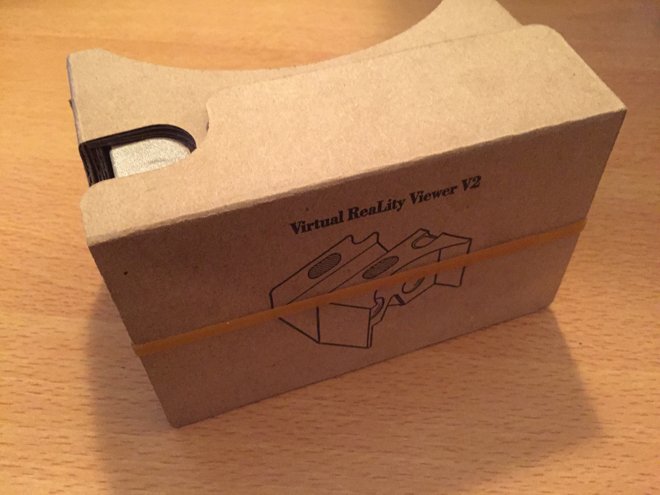How to use Google Cardboard with my iPhone
August 30, 2016
Most importantly, it’s a cheap way for folks like me who wear glasses to experience VR without the discomfort of taking off their lenses.
Annoying to pay $199 for a GearVR as I did last year and no way to use it with glasses. The focusing ring isn’t that thorough a solution. Shame Samsung and Oculus couldn’t do better for the $199 charge.
Thankfully, the heavy hitters (Rift, Vive, Morpheus) are supposed to allow users to keep their glasses while using them.

iPhone users can now use Google Cardboard for fun
Google's giving Google I/O attendees a new version of its Cardboard hardware, with a few key changes. For starters, it's big — it can now support phones up to 6 inches. It's a logical place for Google to go, given the size of the flagship Nexus 6 smartphone. There's also a new button — instead of the old magnetic button, the new one is a piece of conductive foam that works as the primary input device when using Cardboard. And perhaps most importantly, it now works with the iPhone as well as Android. Yes, Cardboard is just a holder, and you could pop an iPhone into the first version (as well as some third-party ones), but a new SDK and Cardboard app mean iOS is now fully supported.
Screen resolution, no matter how high it is will never image legible if you need glasses and don’t have them on.
The Note 3 display although only 1080p, is still over twice the amount of pixels of the iPhone 6 display. The Galaxy S6 has a 1440p display, which is again a big step up. The Oculus for S6 actually works very well with the S6 because Samsung overdrives the screen to a higher refresh rate when attached.
Technically, AMOLED can refresh much faster than LCD because the response time of the pixels is minuscule.
The last change is that it's even easier to assemble — it's a three-step process, and it was so simple I wasn't sure that I did it right. But it only took a few seconds to slip a Nexus 6 or an iPhone 6 in and start trying out the different VR options included in the Cardboard demo app. If you've used Cardboard before, this new hardware will be very familiar — the experience of using it is nearly identical despite the larger size.
The experience using Cardboard with an iPhone is basically identical to using it with an Android phone — there are a few different demo apps (including a fabulous kaleidoscope demo), but other than that performance and the overall experience was nearly identical. Cardboard still offers surprisingly high-quality VR considering it's basically a piece of cardboard and a phone. It's a nice way to get a taste of VR, but there are a few downsides.
For the best experience with google cardboard, use the BoboVR Z4
BoboVR Z4 headset has a build in headphones and it's the best alternative to a free cardboard looking VR headsets on the market at the moment, and it looks really cool
Most notably, other headsets arent very good at blocking out ambient light, as there's nothing to fit it tightly over your eyes. And it's still a rather stuttery experience — Google Earth was impressive, but moving my head around when following the mouse in the Windy Day Spotlight Story on the Nexus 6 was a rather jerky experience. That said, the low-impact, easy to use nature of Cardboard means it'll likely be something I turn back to when I want to mess around in virtual reality. The same will probably go for all the other I/O attendees who just walked out of the keynote with their own free Cardboard headset. In fact, now that Cardboard will work with iOS as well as Android, a whole host of new users will get a chance to give it a shot.
Once you get your cardboard viewer you may take a look at the list of The best virtual reality apps for iPhone, compatible with Google Cardboard
Similar articles:
Publisher: VRExtasy